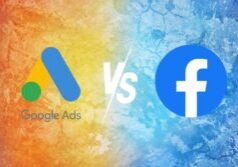It’s critical to keep up with the latest web design trends and standards if you want your website to succeed. The following are the most recent web design trends and guidelines for the year 2021.
Technology evolves at a rapid pace, and website design trends are no exception. In recent years, design elements and website features that were once cutting-edge and original may have become boring, overdone, and trite. The last thing you want to happen when visitors arrive at your site is for them to abandon it because it is outdated or fails to adhere to basic web standards.
Fortunately, the award-winning web design team at MPH stays on top of all the newest website design and development trends in order to produce highly functional, user-friendly websites that perform well and look great. We’d like to discuss some of the most recent developments, digital technology trends, standards, and forecasts for the year 2022.
Thirty Website Design Trends and Standards for 2022
There are some features of web design that will never go out of style – user-friendly navigation, data security, and quick load times should all be standard on your site. However, by using some of these cutting-edge website features and characteristics, you can maintain your site on the cutting edge of design and search engine optimization.
1. Vibrant Color
Colorful minimalism pairs well with one of the year’s biggest web design trends: color! Colors that are bold, vibrant, and saturated make your brand stand out among the bland neutrals that many companies have chosen in recent years.
2. Page Speed and Website Load Time Are King
Ultra-fast load times are one of the most significant web design criteria. For years, fast loading speeds have been an important aspect of UX and SEO, and they remain a key concern for websites that want to rank high and convert better. According to studies, over half of internet browsers want a website to load quickly, within two seconds of clicking a link. Your visitors will most likely depart if your site takes more than three seconds to load, and they are unlikely to return!
The effectiveness of a website has a direct impact on a company’s bottom line. Pinterest cut perceived wait times by 40%, resulting in a 15% boost in search engine traffic and sign-ups. (citation)
When looking for investment properties, you may have heard the phrase “location, location, location” from your real estate brokers. “Conversion, conversion, conversions,” we say at MPH. We utilize website loading speeds as a standard statistic to ensure a positive user experience.
3. Optimized Content Loading for a Better User Experience
Many of us are probably guilty of having resource-intensive websites with a lot of graphical features and third-party integrations that slow down our sites. Fortunately, there are a variety of approaches to creating smart websites that only download the content that you view and require.
Infinite scrolling and lazy loading are not new concepts. For years, the main social networks have used this, particularly when it comes to endless scroll. Long (one) page websites benefit from this strategy as well.
Every website should think about how one or two technology initiatives could help them outrank or outperform their competitors. These features can help improve the user experience for all visitors to your website, which can help boost your conversion rate and rating.
Lazy Load ensures that your web browser (such as Google Chrome, Safari, or Firefox) only downloads the content you see on the screen, rather than wasting server resources and TIME on offscreen content that may or may not be seen. Many internet users never make it all the way to the bottom of a page. So what’s the point of loading that stuff and lengthening the time it takes for the site to load? Loading the material as users scroll down the page and get closer to it is a better strategy.
4. Content that is tailored to your geolocation and browsing history
Perhaps you’ve viewed a website and then returned to find that the material has changed a few hours or days later. When you first open it on your phone or in a different browser, you see the same material that you viewed the first time you visited the website.
It’s no secret that most smart websites keep track of our surfing habits and know where we are. Cutting-edge web companies, on the other hand, will urge their clients to employ dynamic content, which is content that is based on past user behavior or what we know about a user. Not cookie-cutter stuff that caters to everyone.
Users who return to your website for the second or third time may benefit from personalized content.
This is something you’ll notice every time you use Google as a search engine. Users in Troy, Michigan, who are seeking a nearby restaurant will get different results than users in other cities.
A good directory website will also recognize your preferred cuisine. If you’ve already reviewed or saved Italian eateries, it might make sense to prioritize them in your search results.
Another example is when you first visit your bank’s website and need to enter your username and mark your browser as “trusted.” When you return, the bank will recognize whether you are a personal or business customer. As a result, depending on your client status, they will market their residential or business offerings.
For e-commerce website operators, personalized content is definitely more vital. Increased conversions can be achieved by displaying recently seen, saved, or loved products for online customers. Returning clients should be reminded of the contents of their abandoned carts in order to maintain a greater conversion rate.
Users have come to demand individualized website content without even realizing it, and it will become an even more prominent focus for a successful web presence in the future.
5. Integration of Progressive Lead Nurturing Forms with Your CRM Tool
One of the most crucial aspects of a marketing website is the online lead generation form. We want to learn a lot about the people who visit our website, but we can’t ask too many questions at once. On landing pages, we use progressive/dynamic contact forms that display fields based on the lead’s path.
We don’t want to clutter a form with too many fields, but we can always change the form fields based on the information we already have about our leads. At the first conversion, we might ask for the name, company, and email address, and then at the second conversion, we might ask for the phone number, title, company size, and company revenue fields.
CRMs, such as HubSpot, keep track of our leads’ information. We’ll do this by integrating it into our website. When a lead returns to our websites, the CRM can recognize them and display form fields on landing pages that we are unaware of.
6. Chatbots Take on Human-Like Qualities
Another element that has been popular for a few years and will remain significant in 2022 is chatbots. We expect chatbots to become the standard for simple customer service queries and “personal shopping” as artificial intelligence and machine learning become more powerful.
For example, if a consumer comes to your website looking for phone help and the chatbot notices that a free phone upgrade is available, the customer will be notified. The chatbot can inform them of the upgrading. This can provide a great customer experience while also saving the company money on customer service costs connected with speaking with a live person.
7. Voice-Activated Interface (Voice-Activated Interface)
We no longer type into Google to obtain information; instead, we pose a query or make a demand. As a result, web design is evolving to accommodate the growing popularity of voice chatbots and virtual assistants. While voice-activated interfaces aren’t yet ubiquitous on most websites, this burgeoning trend isn’t going away anytime soon.
8. Availability and Accessibility
Inclusivity and accessibility are more than a fad, but the online design must increasingly consider the requirements of individuals with impairments. Having a site that all visitors can navigate and interact with is more than just part of offering exceptional customer service and an excellent experience. It can help you increase conversions, improve your SEO, and reach a larger audience.
Among the elements that increase accessibility are:
- Making a dramatic color contrast between the text and the background
- Adding focus indications, such as the rectangular outline that appears around links when keyboard navigation is used;
- Instead of low-context placeholder text, use labels and instructions with form fields.
- Using image alt tags that are both practical and SEO-friendly;
9. Involvement
Including interactive elements on your website is a fantastic way to provide value to visitors, encourage them to connect with it, and learn more about them.
Assume you’re a real estate agent who has a mortgage calculator on your website. You’re providing value to your visitors while also learning more about them thanks to the information you’ve entered into your calculator.
The following are some examples of interactive marketing:
- Quizzes and other forms of assessment
- Polls and questionnaires
- Calculators
- Contests
10. Virtual Reality
Virtual reality experiences on websites will continue to grow in popularity in the coming years. Consider services like Airbnb, which allow you to visit a rental before making a reservation. Or the ability of IKEA’s furniture site to display how a sofa might look in your room. Virtual reality (VR) can be a great tool for a website to offer helpful, meaningful content to site visitors in a way that aids their purchasing decisions.
11. Micro Interactions
Micro-interactions are little animations that provide visitors with unobtrusive input on a website. When a user hovers their mouse over a link, we’re all used to watching it change colors. With the emphasis on micro-interactions, that same experience may be given extra attention in order to stand out a little more. For example, depending on the link the mouse is hovering over, the mouse trajectory could transform into a different image.
12. Micro Animation
Micro animations are little animations, as you would have gathered from the name. In this example, though, tiny does not imply insignificance. When it comes to directing people through their interactions with your website, micro animations are highly useful.
Micro animations have been popular for a few years, but in 2022, it will be all about naturally using them. We’ll be thinking about how objects move if they’re on a curve or wheel instead of a flat plane, as our UI/production designer explained.
Micro animations are one of the most recent web design trends for e-commerce sites, and they’re being used to improve user experience and give shoppers a taste of their items. Micro animations are already being used by one yoga clothing retailer to show customers how their clothes fit and move on actual people:
13. Natural Forms
In 2020, geometric shapes were a significant website design trend, but in 2022, organic shapes will be all the rage. Anything that isn’t made up of straight lines is considered organic or fluid. Consider the uneven and twisting shapes found in nature, such as hills and the borders of a lake or river.
Fluid forms are an excellent method to divide areas of a website without using sharp lines or angles. They’re also fantastic for using in the background like Android does on their homepage with circles behind products:
14. Minimalism (Flat Design)
Minimalism, also known as “flat design,” is not a new online design trend. Even yet, it’s usually connected with a lot of white space (think Apple.) People will start experimenting with colorful minimalism in 2022, we predict. To be minimalist, it doesn’t have to be all white.
15. Use Color to Evoke Specific Feelings
Along with bright color, we believe that thoughtful use of color to generate specific moods will be important in 2022. Color psychology, or the study of how color affects human behavior, has been around for centuries, and marketers have been using it to help sell for almost as long.
While how we interpret colors has a lot to do with our perceptions, colors are associated with some general moods. Green, for example, is often associated with nature and natural products, whilst red is associated with vigor and passion.
In 2022, we believe web designers will place a greater emphasis on using color to express the mood(s) and feelings(s) that a site is intended to generate.
16. Mobile Navigation with Thumbs
Responsive design is no longer an option. On mobile devices, your site should perform properly and be simple to navigate. However, in 2022, web design will continue to be focused on producing thumb-friendly web pages.
What does it mean to be “thumb-friendly”?
We’re discussing how we utilize our cellphones. Look at how you’re holding your phone right now if you’re reading this on it. Your fingers are most likely curled around the back of your phone (or around a phone hold), allowing your thumb to do all of the heavy lifting. You most likely resemble this.
17. Video Intelligence
For a long time, video has been marketed as a must-have for websites. People enjoy watching videos! Video is fun to watch! It’s the most powerful web marketing tool available!
While video is fantastic, it must be carefully considered. Smart video is all about video with a purpose and meaning. Gone are the days when you could merely put a YouTube video on your website for the sake of having one. A single well-planned, high-quality video is preferable to a dozen hastily made ones.
18. Material Design
Material design is a design language that Google first presented in 2014. The aesthetic of traditional web design is flat. Color and shadows are used in material design to replicate the physical world and its textures.
19. Hero Images with Only Text
To increase sales, newspapers always place their most eye-catching, important information “above the fold.” The “hero section” is the website version of this, and it appears at the top of a page. The removal of the standard background image in the hero section and replacement with eye-catching typography is a recent trend to attract the attention of internet users who are bombarded by multiple web sites every day. A strong, distinctive typeface can be just what you need to grab a user’s attention quickly.
20. Colors and typography with a vintage feel
It’s true that as we get older, we tend to look back to a simpler and better time. It doesn’t just create a throwback on the website when you tap into an audience’s nostalgia; it also combines vintage components with new style. For an ultra-trendy look, combine vintage-inspired typefaces and colors with current artwork.
21. Bold Fonts
Bold typeface is on-trend, as evidenced by a number of websites for major organizations. The viewer is immediately aware of the message, not necessarily the imagery, when using big, bold fonts. The use of bold typefaces and neutral colors draws attention to the headlines, which gradually become their own “picture.”
22. Dark Mode
Web designs in dark mode serve a variety of purposes. On the practical side, they help to reduce eye strain, which is a growing worry as we spend more time staring at screens. On the aesthetic front, dark mode gives your website an ultra-modern look while also allowing you to highlight other design aspects by dimming the items around it.
23. White Space
The purpose of white space is to allow material to breathe rather than to push as much information as possible onto the screen. The experience is more soothing for your website users, the material shines out more, and readability is increased.
The word “white space” simply refers to the distance between items. It doesn’t have to be white as long as there’s no one else in the room. It’s also called as “negative space” because of this.
24. Data Visualization
It’s difficult to provide information in an entertaining manner. However, the effort is worthwhile since data visualization takes use of the fact that humans are visual beings while still conveying the message you want to convey. Data visualization generates graphics from your data that entice your reader to learn more about your company. Infographics and graphs are two of the most used ways to visualize data.
25. Illustrations
When you’re surfing the web, it can feel like you’re seeing the same stock photo on a lot of different websites. It might make a website appear generic and uninteresting.
Custom graphics may help your website stand out and feel new to visitors. Because you’ll be designing illustrations from scratch, they’ll be more accurate representations of your company and branding, as well as complement the page’s content.
26. Homepage Hero (Full Height)
Making your homepage hero section full-height, like a gigantic billboard, can focus your readers’ attention and serve as distraction-free messaging.
Consider full-screen hero portions as a chance to create a wonderful story. Just keep in mind that image cropping will vary depending on browser dimensions. You should choose an image that will fit the bill.
27. Using Graphical Elements to Blend Photos
Overlapping graphics on photographs in your social media feed may have caught your attention. A standard image is given a new degree of inventiveness and fun with this combining approach.
Websites are also catching on to the trend. Using photos and graphics together can help to enhance your company’s branding and keep visitors interested in the content on your website.
28. Use Of Gradients
Gradients have been a popular trend for a long time, ranging from subtle color overlays to eye-catching backdrops.
Gradients can be utilized to provide depth to an illustration, serve as a dramatic background, or softly add texture. It’s becoming more common with larger, stronger typography.
This is a trend that will last. We’re looking forward to seeing how it’s used on websites evolves.
29. Static and Interactive 3D Content
3D features that visitors can interact with have become more common as online technology has progressed and site designers have sought to differentiate themselves from the usual homepage.
30. Frosted Glass Effects
The frosted glass effect may now be easily implemented on websites thanks to recent improvements in web technology. The hazy appearance of components behind the frosted glass overlay adds color to an area while allowing text or objects to appear over the image while being readable.
The effect has become a popular weapon in a designer’s arsenal, and it’s increasingly being employed as a background instead of gradients.
There are a few prominent trends from recent years that will continue to be significant in the future.
1. A mobile-first approach
We already stated that responsive/mobile-friendly web design is no longer an option. Your website should be built with mobile users in mind. In 2015, mobile searches surpassed desktop searches for the first time. Since the start of the year, mobile traffic has accounted for roughly half of all global online traffic. Since 2018, Google has favored mobile-friendly sites over non-mobile-friendly ones. Yes, mobile-first design is another SEO blip on the radar.
2. SSL Certificates
SSL certificates are becoming more of a normal security feature for websites, rather than a fad. The certificate for SSL (Secure Sockets Layer) is placed on your web server. It has two functions: it authenticates the website’s identity, ensuring that users aren’t on a fake site, and it encrypts the data being sent.
This ensures that your website and its users have a private “dialogue.” If you don’t already have an SSL certificate for your website, getting one in 2022 should be a top priority, especially if you run an e-commerce site!
The most recent web design trends and standards for 2022 are: Quick, simple, and eye-catching
We anticipate a slew of clean, bright, eye-catching websites that use animation and video to enhance the user experience in 2022. And with thumb-friendly design, our thumbs should have a break! The design of your website can have a favorable impact on your brand and revenue. Contact our team immediately if you want a modern, user-friendly (and thumb-friendly!) website. Call 248-702-4382 or set up an appointment now!
Lets Talk










